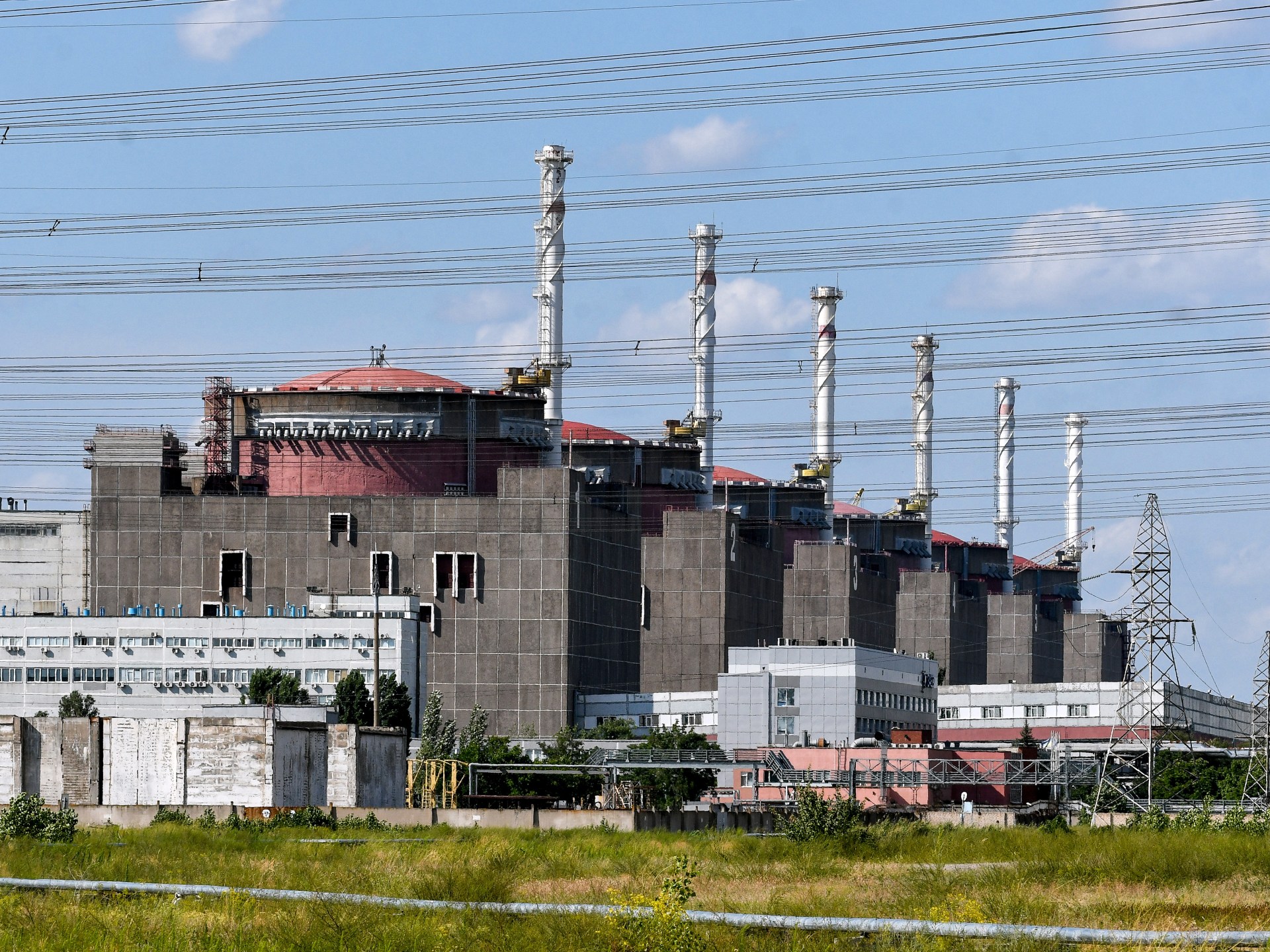Five months after Russian forces took control of the Zaporozhye nuclear power plant, the American newspaper "The New York Times" said that nothing is stopping the world from a nuclear disaster except the Ukrainian engineers operating the plant who are working at gunpoint.
The newspaper pointed out, in a report on the reality of the Ukrainian nuclear plant, that it had previously been subjected to fire and bombardment by Russian forces at the beginning of the war, and that the targeting at that time almost caused a disaster, as a heavy-caliber bullet penetrated one of the outer walls of reactor No. It contains 6 nuclear reactors.
The Zaporozhye plant in southern Ukraine is the largest nuclear power plant in Europe and one of the 10 largest nuclear power plants in the world, and came under the control of Russian forces in March 2022.
The New York Times report, quoting employees of the facility, revealed that an artillery shell had hit an electrical transformer in reactor No. 6 in the facility, which was filled with flammable coolant, and the reactor was active, but the accident passed safely fortunately.
And it quoted one of the workers at the facility - an engineer named Oleksi, who preferred not to reveal his family name for security reasons - as saying that the absence of a fire in the reactor was a happy coincidence.
The specter of a nuclear catastrophe
The New York Times said that with the renewed targeting of the largest nuclear plant in Europe by artillery fire 5 months after the aforementioned two incidents, the specter of a possible nuclear disaster raised the world's attention, and urgent negotiations are now underway to arrange a visit to the plant by experts from the International Atomic Energy Agency.
Officials from the United States, the European Union and the United Nations have called for the area where the Zaporozhye plant is located to be a demilitarized zone, with Ukraine and Russia accusing each other of planning to target the station, which has heightened concerns about its security.
The newspaper's report indicated that the employees of the station, who managed it with great caution over many years, are today hostages working under "Russian occupation", and they have the task of preventing a catastrophe while working under the eyes of Russian snipers.
The New York Times said that Russian forces had arrested about 100 nuclear plant workers and engineers - according to Ukrainian officials and residents - 10 of whom are still missing.
"Imagine men and women coming to work and facing armed soldiers," Serhiy Shvets, a worker in Zaporozhye who fled after he was shot by Russian soldiers in his home last May because of his participation in popular protests against the Russian invasion during the early days of the war, was quoted as saying. Everywhere".
Shvets, 53, who managed to escape to an area controlled by Ukrainian forces where he is still receiving treatment in hospital for his injuries, expressed his fear of what might happen to the nuclear plant and the world, adding, "They are like a monkey carrying a grenade, they don't really understand the threat they pose For the region and the world.
The Zaporozhye nuclear power plant is located in the city of Enerhodar in southern Ukraine, about 200 km from the Donbass region, with a population of about 53 thousand people, and was built in the Soviet era to house nuclear power workers.
The Zaporozhye plant was established following a decision issued in 1977 by the Council of Ministers of the USSR to build a plant according to the standard design for the construction of nuclear power plants operating with pressurized water reactors (PWR) of the type VVER-1000 (VVER-1000). 1000), to actually begin construction on 27 November 1977.
In April 1980, the Soviet company Energoatom began building the first unit reactor, which was completed and delivered on December 25, 1985.
With a scheduled time plan over about 16 years, 6 nuclear power reactors were built at the station, and the last reactor was delivered on September 17, 1996.
In addition to Zaporozhye, Ukraine owns 4 other nuclear power plants: Chernobyl, Rivne, Khmelnitsky, and South Ukraine. Kyiv has 15 pressurized water reactors (BWR), only 8 of which are currently connected to the network.

